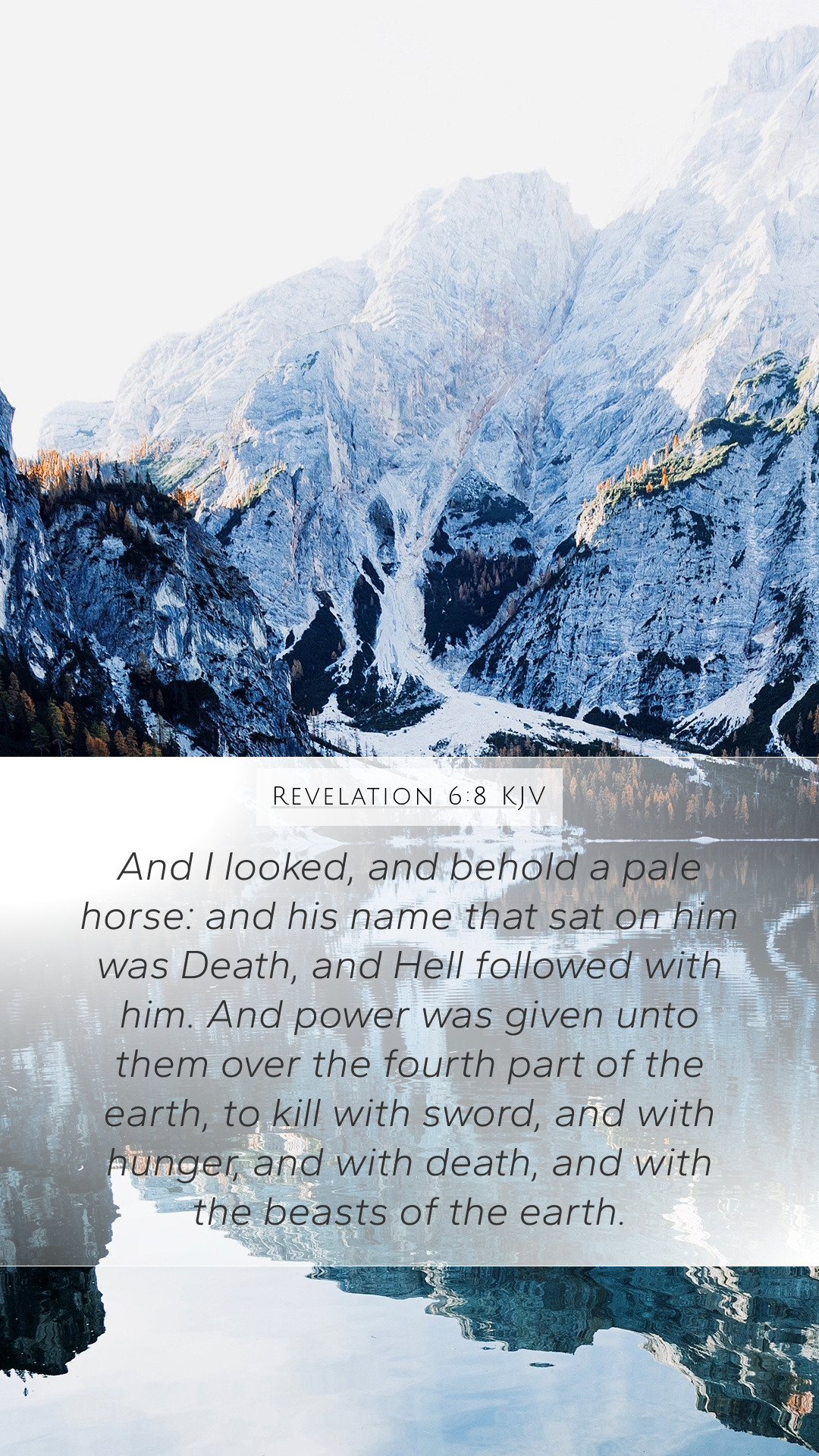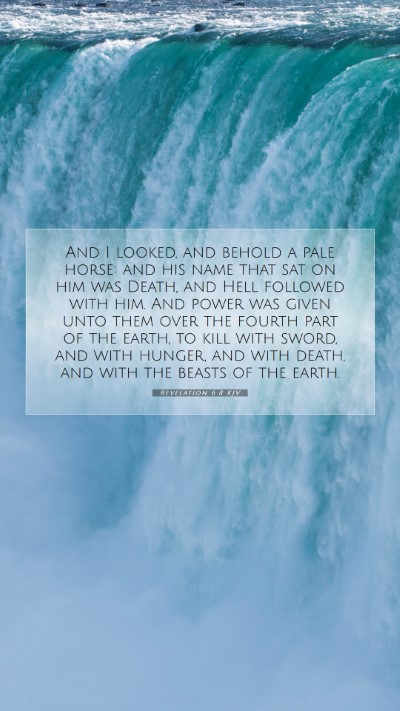Understanding Revelation 6:8
Revelation 6:8 states: "I looked, and there before me was a pale horse! Its rider was named Death, and Hades was following close behind him. They were given power over a fourth of the earth to kill by sword, famine and plague, and by the wild beasts of the earth."
This verse portrays a significant apocalyptic image characterized by the appearance of a pale horse, which symbolizes death and destruction. The rider's name, Death, coupled with Hades following, indicates the serious and inevitable consequences of sin and divine judgment.
Insights from Public Domain Commentaries
-
Matthew Henry's Commentary:
Henry emphasizes that the imagery of the pale horse conveys the idea of death's omnipresence and its masterful control over humanity during the tribulation. This horseman signifies a period when the human experience is dominated by the consequences of sin and the intervention of divine retribution.
-
Albert Barnes' Notes:
Barnes notes that the pale horse represents famine, pestilence, and war's devastating effects, which collectively lead to widespread death. He connects this to God's judgment, signifying the need for repentance and the ultimate victory of Christ over evil.
-
Adam Clarke's Commentary:
Clarke elaborates on the frequency and totality of death described in this verse. The fourth part of the earth being killed hints at the magnitude and severity of these judgments, emphasizing the reality of suffering that accompanies divine pronouncement.
Meaning and Significance
The symbolism within Revelation 6:8 serves as a powerful reminder of mortality and the fragility of human life in the face of divine justice. This passage urges readers to reflect on their lives and paths while recognizing the ultimate sovereignty of God over history.
Key Themes and Concepts
- Death and Judgment: The verse underscores the theme of death's inevitability and the coming judgment, showcasing the consequences of sin.
- Divine Sovereignty: It illustrates God's control over life, death, and the circumstances surrounding humanity.
- Call to Repentance: The depiction of these riders serves as a warning, calling individuals to examine their lives before the impending judgment.
Bible Verse Commentary
This verse is often explored in Bible study groups and online Bible study settings for its rich theological implications. The discussions surrounding this verse encompass bible study lessons that probe deeper into the nature of divine judgment and salvation.
Cross-References
- Matthew 24:7 - "For nation will rise against nation, and kingdom against kingdom, and there will be famines and earthquakes in various places."
- 1 Corinthians 15:26 - "The last enemy to be destroyed is death."
- Revelation 20:14 - "Then Death and Hades were thrown into the lake of fire. This is the second death, the lake of fire."
Application of Revelation 6:8
Understanding this verse can profoundly affect how one approaches the issues of suffering and mortality. It calls for an engagement in Bible study tools and Bible study resources that encourage deeper reflection and analysis of divine truths.
Conclusion
In summation, Revelation 6:8 serves as a vital message in the Bible study curriculum, offering profound insight into the nature of divine judgment and the call for humanity to live righteously. Through effective Bible study guides, individuals can gain a clearer understanding of Scripture and how it applies to daily life. This wisdom is vital for anyone seeking to comprehend the complex messages within the Bible, particularly in understanding difficult Bible passages.


